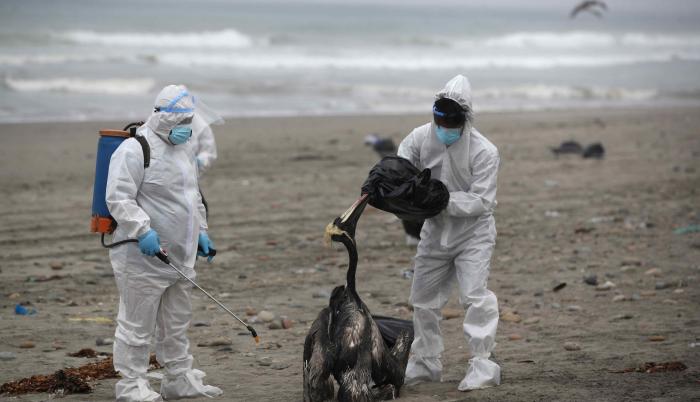The National Animal Health and Quality Service (Senacsa) warned this Friday that the country has a “very high” level of risk, due to the cases of avian flu reported in the region, particularly in neighboring countries such as Bolivia and Argentina.
Source: EFE
The body assured that No cases of bird flu have yet been reported in the country, caused by the H5N1 virus in wild birds, but their migration from countries like Argentina and Uruguay increases the risk of the virus reaching Paraguayan territory. expressed to the general director of the Directorate of Animal Health, Identity and Traceability (Digesit), Víctor Maldonado.
“The level of risk that Paraguay has today is from high to very high. With the two notifications we have received. One from Argentina, in migratory wild birds, (and) the other from Uruguay,” said Maldonado.
The general director of Digesit, which is part of Senacsa, asserted that the risk in the country is mainly due to the fact that prevention measures against bird flu “are ineffective.”
It may interest: Measles can leave long-term sequelae, they warn
Maldonado stated that The measures to deal with this virus involve three fundamental actions: early detection of the virus, containment and rapid elimination.
“Early detection is essential so that we can act as quickly as possible,” he said.
Besides, rapid and effective containment and removal must be implemented so that this “event does not happen to domestic birds”
In his opinion, the “most dangerous” thing is that the virus infects domestic birds given the high “transmissibility”, which would make containment a “much more complicated” situation.
The decision of Argentina and Uruguay to declare a health emergency after the discovery of the first cases of bird flu inincreased the level of alert in Latin America due to the advance of this disease, that has come to affect humans in recent decades and has recently also been detected in some species of mammals.
The situation in Argentina and Uruguay is far from isolated, as this Tuesday Guatemala declared a state of emergency after confirming the presence of the H5N1 virus in pelicans.
Also read: Pilcomayo River: after rebounding, it remains out of risk and in decline
On February 8, heThe World Health Organization (WHO) warned through an official statement about the spread of this disease in mammals in different regions of the world.
bird flu mainly affects domestic birds and is classified into 2 subtypes based on two proteins surface and is considered highly deadly, according to the WHO.
Although it is an animal disease, transmission to humans who have contact with sick birds is possible.















